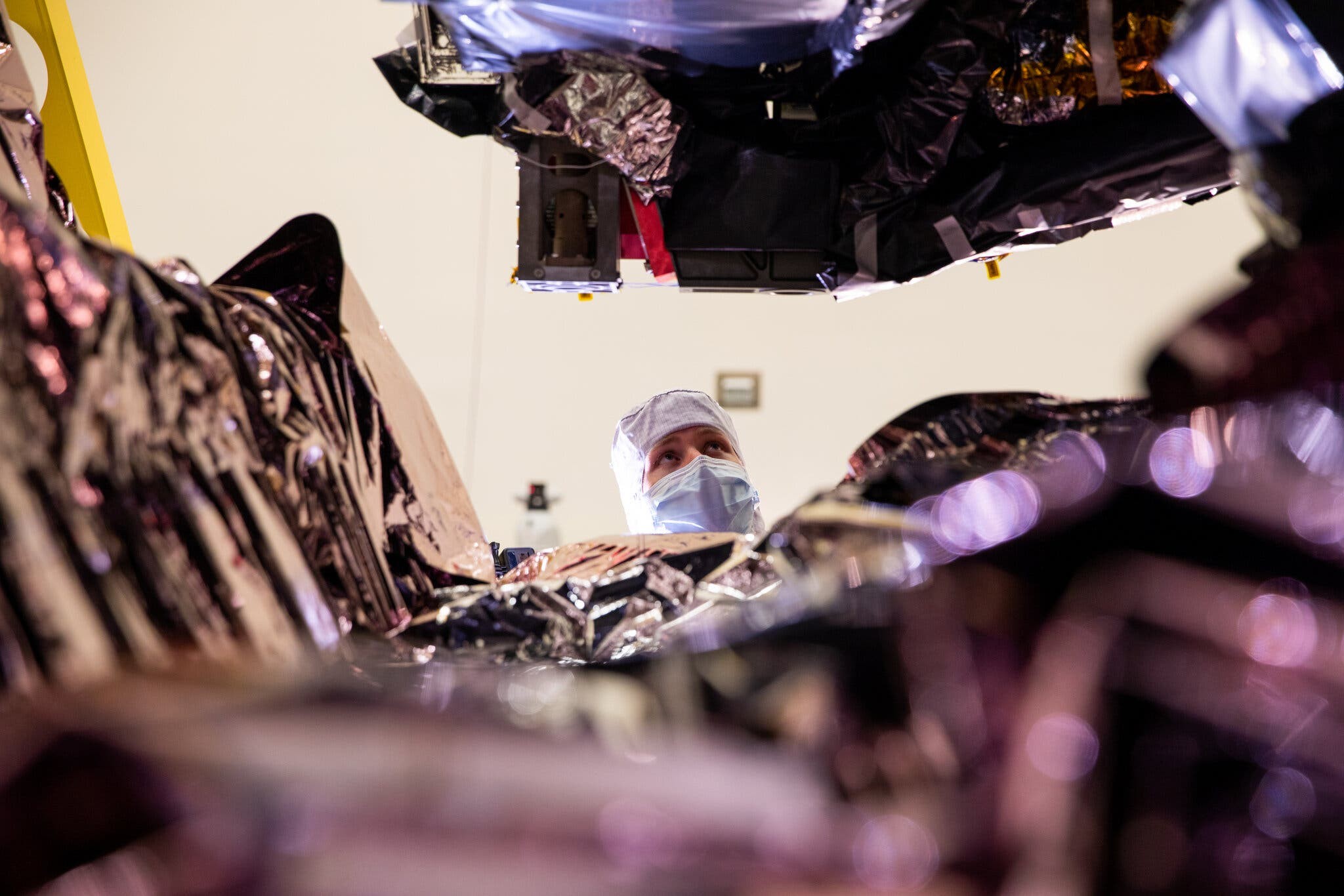Before it can study the first stars and galaxies, the James Webb Telescope will first have to survive its launch, as well as the long sequence of its deployment in the deep space before returning to its observation post.
In the papers since the 90s, the James Webb Telescope was expected to cost less than a billion dollars and be ready in the 2000s. Nearly thirty years old and ten billion dollars spent later, the observatory is finally ready for launch. The result of a collaboration between NASA, the European Space Agency and the Canadian Space Agency, it should take off next December 25 .
Once deployed, the JWT will be the most powerful observatory ever launched into space, promising astronomers to pierce the dark curtain of the early days of the universe. So inevitably, astronomers are a little worried.
“You work for years and everything goes up in a cloud of smoke “, emphasizes to Times Marcia Rieke of the University of Arizona. Like many, Dr. Rieke admits she will be crossing her fingers on December 24. And for good reason, for twenty years, it has been working on the design and construction of an ultra-sensitive infrared camera intended to probe the faintest objects in the universe.
Michael Turner, a cosmologist at the Kavli Foundation, also describes a combination of excitement and dread. “The next decade of astronomy and astrophysics is built on the success of the James Webb Telescope “, explains the researcher. He also adds that the prestige and leadership of the United States in space and science are also at stake. "It's a heavy burden to bear ", he said, "but we know how to do great things “.
This opinion is shared by Martin Rees of the University of Cambridge. "Any failure of JWT would be disastrous for NASA “, he writes in particular to the Times.
Dr. Natarajan, who plans to use the JWT to probe the origins of black holes, also compares the telescope to other milestones in human history. “Remarkable enduring achievements of human hand and mind be it the temples of Mahabalipuram, the pyramids of Giza, the Great Wall or the Sistine Chapel all took time and expense s,” she said. “I really see this observatory as one of those monuments of our time . »
If successful, this observatory could indeed change everything . Thanks to its instruments, the telescope will search for the light of the first objects that appeared after the Big Bang. It will also make it possible to study the structure of galaxies in greater depth, to probe protoplanetary disks in more detail and to measure the molecular composition of the atmospheres of nearby planets.
“Given the wide range of expected scientific feedback, we are obviously all intellectually and emotionally invested “Summarizes Priyamvada Natarajan, astrophysicist at Yale.

And there is cause for concern. If the Ariane 5 rocket that carries the spacecraft has rarely failed to deliver its payloads into orbit, zero risk does not exist in aerospace. And even if it survives the launch, the telescope will have a long way to go afterwards.
Over the following weeks, the observatory will have to execute several hundred maneuvers adjusted to the millimeter in order to deploy its gigantic "sunscreen" and large golden mirror. For six months, everything will have to work properly at the risk of dropping the mission.
Among the engineers behind its design, as among the astronomers responsible for using it, the level of anxiety will remain very high for about six months. Indeed, no rescue operation will be possible.